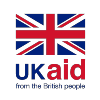In the Terai region of South-Eastern Nepal, there persists a form of agricultural bonded labour called Harwa-Charwa, rooted in agricultural feudal social relations.
The Terai has a long and dynamic political history with limited employment opportunities and high levels of migration. This paper is an external qualitative analysis of over 150 life stories from individuals living in an area with high levels of bonded labour. These stories were previously analysed during a workshop through a collective participatory analysis. Both the participatory analysis and external analysis found similar mechanisms that trap people in poverty and bonded labour. The disaggregation by age in the external analysis could explain why child marriage and child labour were very important in the collective analysis but did not match the results of a baseline survey in the same geographical area that found only a few cases. The respondents were aged between 15 and 65. Child marriage and child labour had shaped the lives of the adults but have since decreased. Methodologically, the different ways of analysis diverge in their ability to differentiate timelines. The participatory analysis gives historical insights on pathways into child labour, but although some of the social norms persist this situation has changed.
Cite this publication
Cannon, M. and Oosterhoff, P. (2021) Bonded: Life Stories from Agricultural Communities in South-Eastern Nepal, CLARISSA Working Paper 6, Brighton: Institute of Development Studies, DOI: 10.19088/CLARISSA.2021.003
 Download full article
Download full article